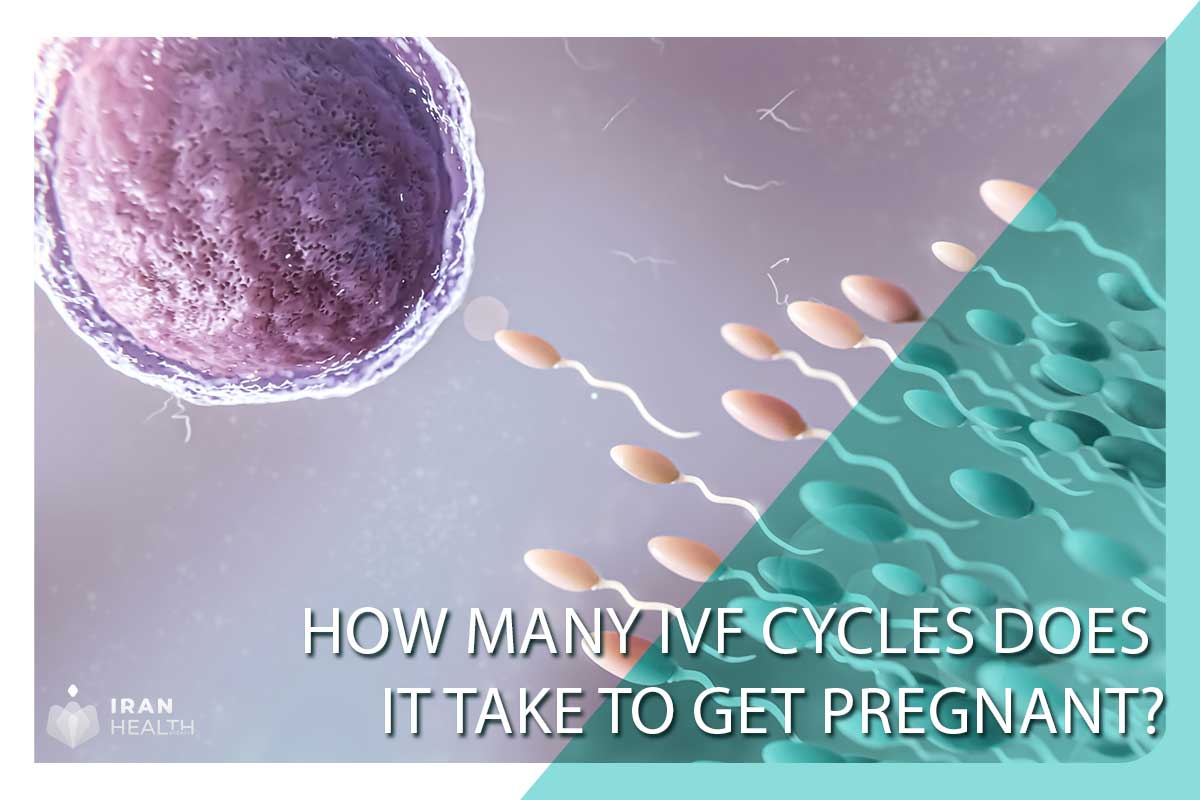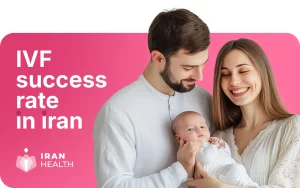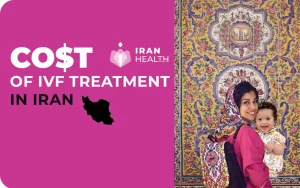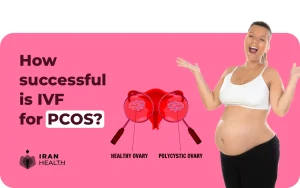After all, each IVF cycle can be gruelling emotionally and financially. Therefore, most couples and single mothers pursuing fertility treatment prioritize determining reasonable expectations for the number of attempts required to achieve that long-awaited positive pregnancy test.
According to research, the magic number is often six. Studies have shown that approximately 65.3% of IVF patients under 40 years old successfully conceive after six or more full IVF cycles. That means two out of three IVF patients have a baby after enough repeated attempts with their eggs.
There is a good chance of success if you keep trying, even if your first or second IVF cycle doesn’t result in a positive test. Most younger patients who complete six IVF rounds are more likely to go home from the clinic with a healthy baby.

IranHealthAgency explains that while some couples achieve success after one cycle, others may need multiple attempts. Understanding factors like age, embryo quality, and overall health can help manage expectations during IVF in Iran.
Success Rates of IVF Cycles
- Each complete IVF cycle has about a 20-35% chance of resulting in a live birth for women under 35 using their eggs.
- Success declines with maternal age, with rates <5% per cycle for women over 42
- On average, it takes roughly 3 to 4 IVF cycles to achieve a successful pregnancy.
Factors That Impact the Number of IVF Cycles Needed
Maternal Age
- Generally, younger women conceive faster, with more cycles often required for women over 35.
Reasons for Infertility:
- Problems like endometriosis or poor egg quality require more cycles. C. Use of Donor Eggs.
- Donor eggs have much higher success, averaging 50-60% per cycle D. Genetic Testing of Embryos.
- Can help select embryos most likely to implant and reduce needed cycles E. Access to Fertility Specialists
- Expertise improves IVF outcomes.
Trying Multiple Cycles
- The more consecutive IVF cycles pursued, the higher the cumulative pregnancy rate
- 65% will conceive after six or more cycles, according to research
- But costs rise with each successive cycle
Alternatives After Multiple Failed Cycles
- Adjusting medications or treatment protocol
- Further diagnostic testing
- Using donor eggs/sperm
- Considering gestational surrogacy or adoption
Let’s address the most critical question related to this topic.
- How many times can you do IVF in a year?
Most clinics allow a maximum of 2-3 IVF cycles in a single year, spaced a few months apart. Doing more cycles continuously often leads to lower success and higher risks.
- Three failed IVF cycles; what next?
After three failed cycles, taking a break and further diagnostic testing to uncover any underlying issues is recommended. Changing protocols, IVF specialists, using donor eggs/sperm, or exploring options like gestational surrogacy or adoption are also discussed. Success chances do remain reasonable through at least 6 IVF attempts.
- How many rounds of IVF are standard over 40?
Over 40 chances of IVF success drop sharply per cycle to an average of just 3-5%. So typically, 6 IVF cycles are tried before moving on to donor eggs or alternative family-building options. Patients over 40 may require more cycles, but not always.
- Is IVF more successful after having a baby naturally?
Yes, IVF success rates do significantly increase in patients who have successfully conceived once before. The body has shown it can sustain a pregnancy. However, previous natural conception does not guarantee future IVF success. Other factors like age still play a role.
- What is the success rate of IVF on the first try?
On average, the first entire IVF cycle has about a 29% chance of resulting in a live birth. But chances range widely from nearly 50% in ideal candidates who are young with unexplained infertility to less than 5% in poor prognosis patients over 42.
- How many IVF cycles did it take you to get pregnant, Reddit?
The average number of IVF cycles for patients to conceive is 2-3. According to IVF forums, 20-25% of patients develop during the first cycle, while 38% imagine by the fourth. IVF cycle. However, answers and online data should differ from discussions with your doctor.
- How many IVF cycles before success?
On average, 65% of patients pursuing IVF conceive by six complete IVF cycles. 8 in 10 eventually conceive after multiple cycles. While chances decline with each failed cycle, comprehensive testing and protocol adjustments can improve outcomes.
- How many rounds of IVF are too many?
There is no definitive scientific cut-off for too many IVF cycles. Success is still possible even after ten attempts for some. But costs rise exponentially, and emotional stamina may wane after many repeat failures, so most patients set personal limits. On average, stopping IVF occurs after 4-6 attempts if using one’s eggs with no success. Moving onto donor eggs or other family-building options is highly personal. Counseling helps explore when to switch focus.
Wrap-up
Many patients wonder if they should keep trying IVF; knowing how many cycles it takes for most women like them to see success finally provides valuable insight. The data indicates that for all the heartbreak IVF brings when it fails initially, hope remains alive for the majority if they can keep enduring both emotionally and financially through those six cycles.
Do you want to do an IVF with a high success rate?
You can Do IVF surgery in another country where the cost of IVF is low. One of these countries is Iran. The country has a high success rate for IVF but due to currency price differences, it has a low price for foreigners to do IVF in this country.
You can have IVF surgery in Iran in complete safety and with a high success rate



